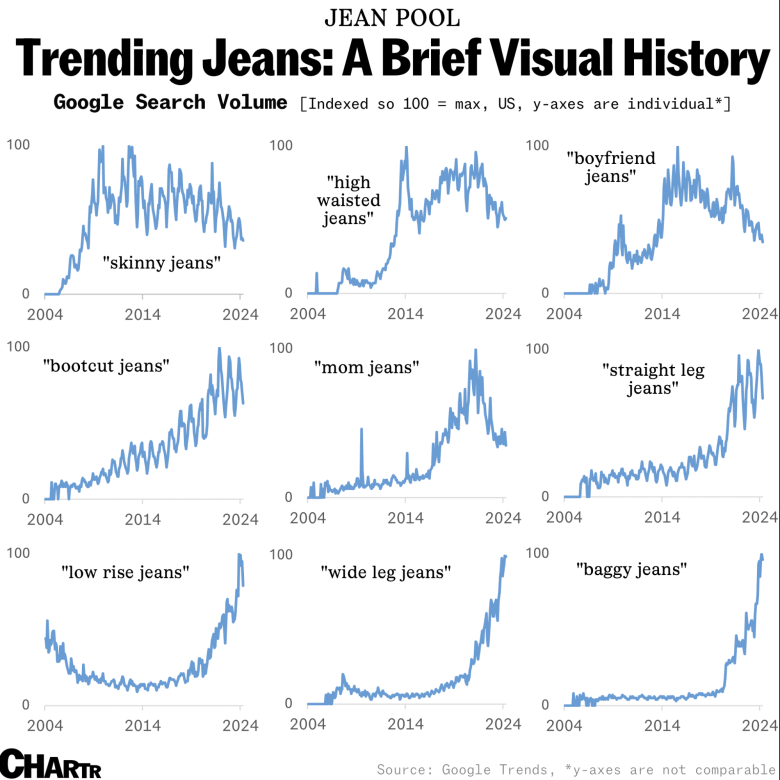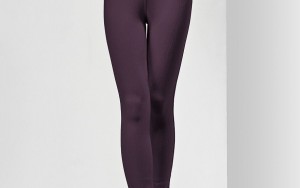Denim…it’s the rare person who does not own a pair (or many pairs) of jeans. In fact, chances are good that jeans are a staple in your wardrobe or, if not, they at least make an occasional appearance. While the trending styles of denim may change from time to time, we tend to roll with the changes and keep purchasing and wearing jeans regularly.
Denim has a 150-year history originating with a design by Levi Strauss. At the time, they were worn mostly by farmers and laborers but over the next few decades that changed significantly until they became the go-to for nearly all of us. These days, denim can be worn almost anywhere and even my 90-year-old mom wears jeans!

My History with Denim
When I was growing up, I’m sure jeans were popular, but they were generally relegated to very casual occasions and, believe it or not, I didn’t own a pair. The all-girl high school I attended didn’t allow us to wear pants, let alone jeans. That changed temporarily one winter when so many of us had frozen, red knees that the headmaster (a man!!) acquiesced and let us wear pants, but not jeans, during the cold weather).
Personally, I was not a fan of denim anyway. I found it stiff and constricting. I would watch friends throw on a pair of jeans and look casual, cool and comfortable, but I wasn’t one of them. I detested low rise jeans (we knew them as hip huggers) which were popular back in the 70’s so, at the time, I was in no hurry to add them to my wardrobe. It wasn’t until designers started adding stretch that jeans found a place in my wardrobe.
Fascinating Facts about Denim
What’s fascinating is the variation of styles that denim has taken over the years and what I discovered about the history of denim: https://sherwood.news/world/denim-never-dies-why-america-still-loves-jeans/.
Think about it…how many different styles of denim have you owned over the years? There’s no hiding the fact that denim trends change regularly and I am thankful that, at least at this time, we have options other than low rise! The graphic (in the article above) that caught my eye was this one – it shows the rise and fall of various denim trends over the past 20 years. What I totally love is that so many styles are currently popular so there is something for everyone!

What about Denim Fabric?
Since denim is considered a natural fabric, it might also be assumed that the environmental impact is negligible. Unfortunately, that is very far from the truth. For starters, denim is basically cotton and conventional cotton requires a very high amount of pesticides to grow. That reliance on substantial pesticide use can degrade the soil over time.
In addition to the pesticide concern, the detrimental environmental impact is affected by the indigo dyes used, the enormous amount of water it takes to make just one pair of jeans as well as the additional fibers added to give it stretch. There are many articles out there about these environmental issues. Here are two: (https://www.nationalgeographic.com/environment/article/blue-jeans-indigo-indican-enzyme) and https://earth.org/fast-fashions-detrimental-effect-on-the-environment/
Does Where You Buy Jeans Matter?
Yes, from an environmental viewpoint, it definitely matters where you buy your jeans. While some of the prices of denim these days seem crazy, the other extreme of super low pricing has its drawbacks as well. Fast fashion’s purpose is to constantly churn out unbelievable amounts of clothing in order to satisfy the needs of people to be on the cutting edge of fashion or simply to get the lowest price. But these choices can have a shocking cost to our environment. As this article shares, “Jeans production and cross-broad transportation contributed 91 % of the carbon footprint of fast fashion consumption,”
https://nypost.com/2024/04/05/lifestyle/wearing-jeans-is-bad-for-earth-study-finds-and-yes-even-just-once/
Sustainably Produced Denim
Since concerns around sustainability of fashion are gaining popularity, it’s good to know that some fashion brands are working on more sustainable options. Of course, this also means they often come with a much higher price point which might often be out of budget for many.
Interestingly, just today, in my regular quest to find a denim jacket I would want to wear, I came across one at the Gap that appears to be addressing some environmental concerns and was a much more moderate price. They said this about their denim, “This denim is part of our water-saving Washwell program. Compared to conventional wash methods, Washwell has saved millions of liters of water since 2016.”
Everlane is another brand that is focused on sustainability and they use organic cotton for their denim. Their price point is only slightly less than what you’ll find in the article below. It’s good to know there are continually more brands making environmentally friendly choices available.
You can read more about some of the other sustainable denim brands here: https://www.vogue.com/article/best-sustainable-denim-brands#
5 Ways to Decrease Your Denim Carbon Footprint
Defaulting to fast fashion or paying the significantly higher prices for your jeans are not the only ways to decrease your denim carbon footprint and make choices that are better for the environment.
The good news is that these 5 suggestions can be applied to your entire wardrobe not just denim.
- Whatever your price point, buy jeans and wear them for a long time.
- Wash your jeans in cold water and hang to dry. If they have stretch in them, never put them in the dryer because heat destroys the stretch.
- Buy only what you’ll wear. It’s easy to feel like you need every style of denim in every color, but the truth is that there are only so many clothes you can wear unless you’re changing your clothing multiple times a day. Choose the styles and colors you like the best and that have the most versatility for your lifestyle.
- Buy second hand. Consignment is huge right now whether you shop in-store or online. You can find some amazing options and these purchases dramatically mitigate your environmental impact!
- Tailor your jeans for better fit or to tweak the style. Using a really good tailor can reduce your costs so you don’t necessarily have to buy new jeans as often. If they have stretched out a bit, your tailor can take them in so you can get more wear out of them. If you’ve decided you don’t want wide leg jeans, have your tailor turn them into a straight leg style or crop them. If you aren’t already using a tailor, you’ll be surprised at the magic they can perform on many items in your wardrobe!
I suspect that denim will continue to be a staple in everyone’s wardrobe and I have my fingers crossed that the current trend offering us a variety of popular jean styles will become the norm!
I’d love to know what YOUR favorite denim style is! In case you’re wondering, without a doubt, mine is bootcut.







